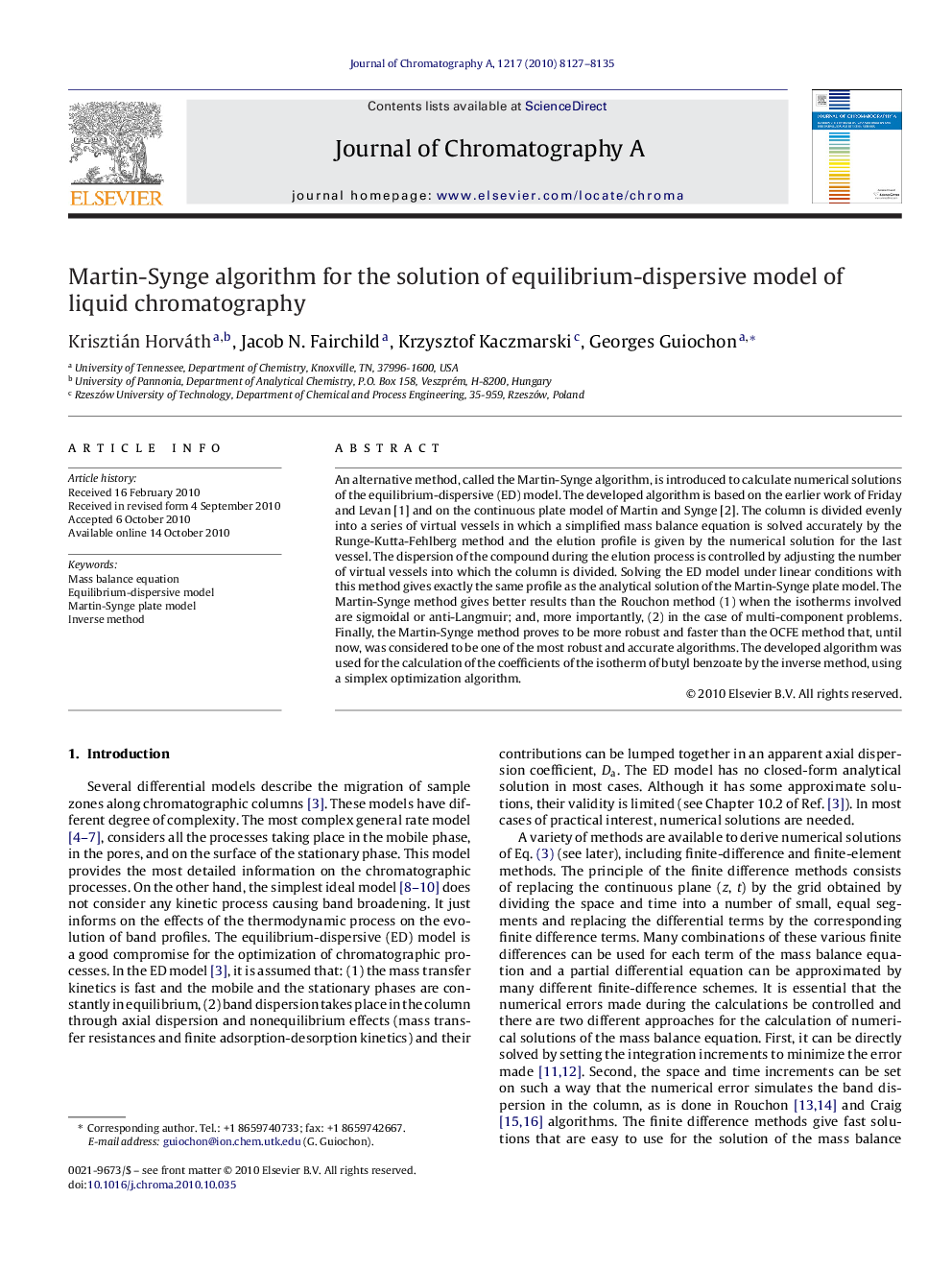| Article ID | Journal | Published Year | Pages | File Type |
|---|---|---|---|---|
| 1203438 | Journal of Chromatography A | 2010 | 9 Pages |
Abstract
An alternative method, called the Martin-Synge algorithm, is introduced to calculate numerical solutions of the equilibrium-dispersive (ED) model. The developed algorithm is based on the earlier work of Friday and Levan [1] and on the continuous plate model of Martin and Synge [2]. The column is divided evenly into a series of virtual vessels in which a simplified mass balance equation is solved accurately by the Runge-Kutta-Fehlberg method and the elution profile is given by the numerical solution for the last vessel. The dispersion of the compound during the elution process is controlled by adjusting the number of virtual vessels into which the column is divided. Solving the ED model under linear conditions with this method gives exactly the same profile as the analytical solution of the Martin-Synge plate model. The Martin-Synge method gives better results than the Rouchon method (1) when the isotherms involved are sigmoidal or anti-Langmuir; and, more importantly, (2) in the case of multi-component problems. Finally, the Martin-Synge method proves to be more robust and faster than the OCFE method that, until now, was considered to be one of the most robust and accurate algorithms. The developed algorithm was used for the calculation of the coefficients of the isotherm of butyl benzoate by the inverse method, using a simplex optimization algorithm.
Related Topics
Physical Sciences and Engineering
Chemistry
Analytical Chemistry
Authors
Krisztián Horváth, Jacob N. Fairchild, Krzysztof Kaczmarski, Georges Guiochon,
